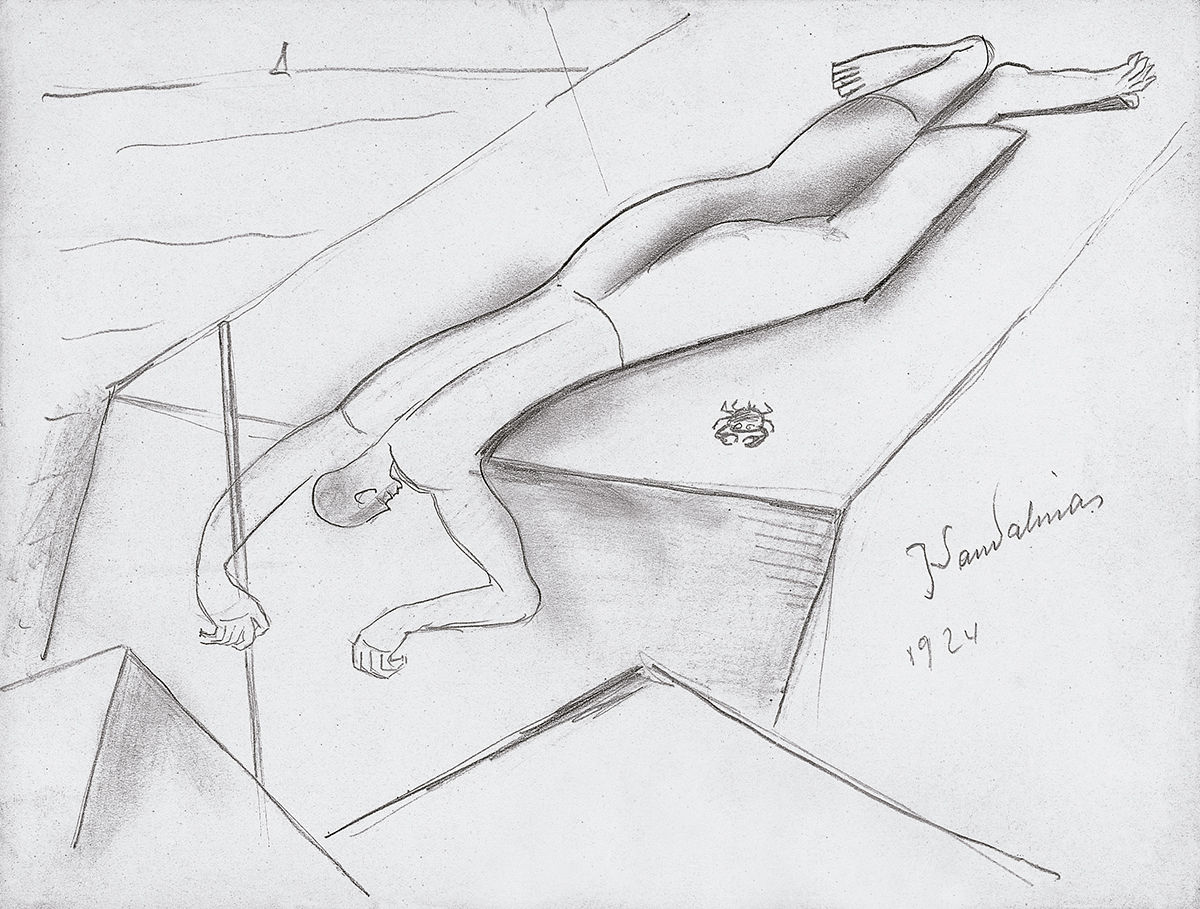COLLECTIONS CATALOG
The work of Joan Sandalinas does not follow a linear evolution. The sort of Cubism he discovered in 1920 at an exhibition of the French avant-gardes at Galeries Dalmau appeared in several stages within his oeuvre, sometimes in a way that was closer to Picasso and synthetic Cubism, and other times closer to Constructivism.
Cubism and figuration meet in this drawing of 1928. The character’s profile emerges as a single form, while his head is decomposed into two planes. Sandalinas’ characters are gigantic, stylized, and vertical. The artist grants importance to their hands. In this instance, the fingers on his left hand, holding up the banjo’s neck, combine naturalism and abstraction. His sloping neck introduces a dynamic diagonal, while his face—drawn outside of the figure—raises the question of identity.





